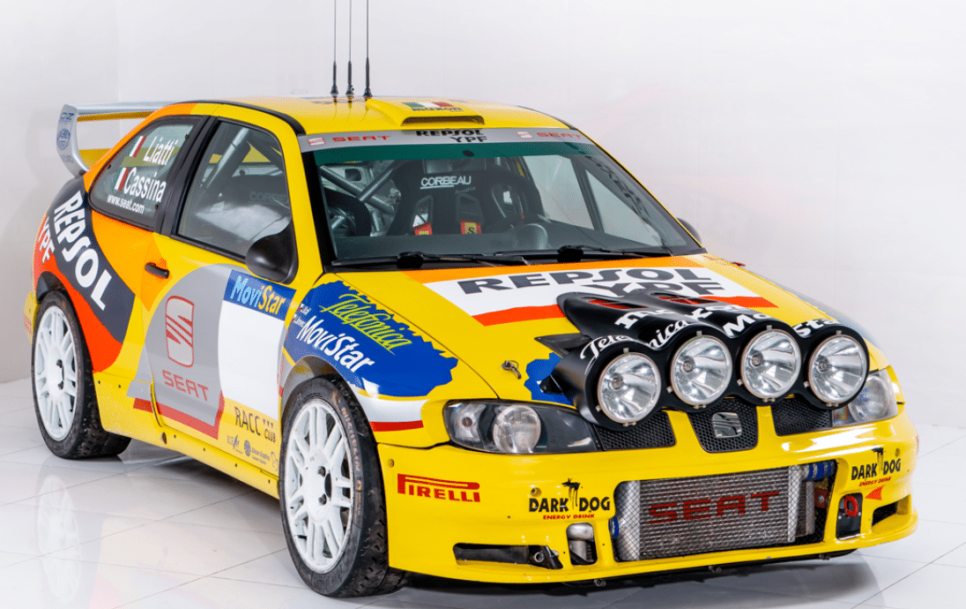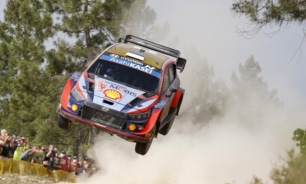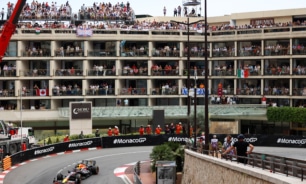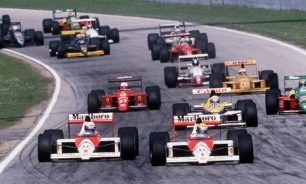On the eve of the Portugal rally: if only Seat had Peugeot engineers…
The World Rally Championship series moves to Portugal this week, thus kicking off the gravel rally season. In addition to the Portuguese flags, you can also see the Spanish ones, because old champion Dani Sordo is on the track. However, when we mentioned words like “old” and “Spain”, Seat came to mind instead.
The adventure of the Spanish car manufacturer in the WRC did not turn out to be overly successful, but thanks to the iconic computer game Colin McRae Rally 2, the yellow Seat Cordoba appears before the eyes of all rally fans. But why didn’t it become a hit?
Seat’s rallying history began back in 1971 when they created a separate motorsport division to compete in local championships. Their first baby was the 1.6-liter Seat 124. In the Spanish championship, the machine proved itself relatively quickly, and in 1975 it was decided to test it in the World Series as well.
Initially, it did not achieve overly impressive results, but 1977 opened with a real surprise bomb: Antonio Zanini and Salvador Canellas came third and fourth respectively in the Monte Carlo Rally. True, 153 (!) retirees also played their part in it.
Although in the following years Seat also earned its first international victories – in the European Championship – they were not overly successful. In 1980, their rally stuff completely fell apart, due to the economic crisis: their previous engine partner FIAT decided to end the cooperation to save costs.
A new rise from under Volkswagen
Five years later, however, the corresponding department was reborn, this time under the name Seat Sport. Although everything officially happened a few days before, in fact, behind the phoenix-like rise from the ashes was the fact that Volkswagen Group bought Seat (and also Seat Sport).
Seat’s rally department came to life again in the 90s, when they started developing the Seat Ibiza at the encouragement of the parent company. This gave them their first success in Portugal in 1995 when Erwin Webber placed third in the 1.8-litre sunbeam. A few months later, at Akropolis, Seat already earned a double victory in Group A (equivalent to the current Rally2).
In 1996, Seat already came out with the official Ibiza kit car, thereby participating in the World Cup series for machines up to two liters (FIA 2 Liter World Cup For Manufacturers). The result? The whole season was evenly matched with Renault and Škoda, but at the last rally of the season in Great Britain, the rivals were put in place and the title was grabbed.
Defending the title the following year, Seat’s success in front of Škoda was already mountain-high, at which point they began secretly dreaming of their own WRC car. Initially, the Volkswagen Group did not want to go along with this idea, but the Spaniards, blinded by success, still managed to convince the people of the parent company – who made the financial decisions.
An unexpected obstacle in the way
That’s how Seat started developing its WRC machine under the leadership of ex-Citroen engineer Benoit Bagur. Initially, they wanted to use the same Ibiza as the basis, which succeeded among the 2-liters, but one shortcoming became apparent. Namely, the Ibiza was too short for a four-wheel drive rally machine!
Since at that time, there was no other suitable machine in Seat’s fleet – they only sold front-/rear-wheel drive machines then – the team’s engineers decided to use the Seat Cordoba, i.e. sedan developed from Ibiza, as the basis.
When the Spaniards had already been working on the Cordoba for some time, they learned that competitor Peugeot, faced with the same problem, had found a clever way around it. Namely, the French artificially lengthened the body of the 206e, making it suitable for four-wheel drive and the WRC series.
Understandably, fury was unleashed at the Seat factory, but since the development work was already underway, it was decided to continue with it anyway.
The machine just wasn’t suitable
During the work, however, it became apparent that the Cordoba was too long, heavy and, admittedly, with poor weight distribution for Seat’s (successful) rally setup. Simply put: its engine was too forward and high. In short, Seat could not use the knowledge gained from Ibiza on the Cordoba at all and had to develop everything again from scratch.
Combining this fact with the pressure of time – because of the promise given to Volkswagen, Seat still wanted to come out with the machine in 1998 – and there you have it – the problem of why the Cordoba never became a real rally beast. Seat’s engineers simply weren’t given enough time. And when the so-called partial solution had come out, it was necessary to start correcting its errors, not to develop the machine further.
So, it turned out that although Cordoba might be super cool visually, it did not bring much results. The trio of Harri Rovanperä, Toni Gardemeister and Didier Aurio all managed to make it to the podium once, but generally, the men found themselves at the bottom of the top ten. If they even made it to the finish line…
Seeing that the results were not coming, rumours began to circulate in 2000 that Seat was considering taking time off and abandoning the Cordoba project, to come out with a new Seat Leon-based WRC machine in a year or two.
Things didn’t get that far, however, because the frontmen of the Volkswagen Group got in the way, and they decided to pull the plug on the Seat Sport rally program. This is exactly how the WRC dream of the Spanish car manufacturer infamously collapsed.
What did the drivers say before the Portugal Rally?
Ott Tänak (Hyundai): “After Croatia, it’s nice to be back on a rougher surface again. Portugal is an extremely enjoyable rally and an event I always look forward to. It’s a very fast and smooth rally on the first run and very rough on the second. This can be seen visually, because on the second pass, the roads can become rutted. Thanks to the [high] temperature, Portugal is also the first rally in the calendar where car and tire maintenance plays a bigger role than usual.”
Thierry Neuville (Hyundai): “To be successful in Portugal, you must be stable, have a good car setup and be confident. Road conditions and starting position also play a role in our result here: when it rains, we are very, very fast, but in dry conditions, it is more difficult for us.”
Dani Sordo (Hyundai): “It is a unique challenge for the car because of the temperatures and profile of the stages, so getting the right setup is key to doing well in Portugal. It will be interesting with a lot of the part-time field being so competitive this season, and with road position being another important factor in going well on this kind of gravel, there will be a huge push across a cleaner line at the back of the order.”
Kalle Rovanperä (Toyota): “The Portuguese stages have a very nice character, which suits me quite well. However, all the top drivers know them, so the speeds will be very high and the gaps exceptionally small. Maybe the starting position speaks in our favor, but we also have to see what the weather does, because rain can turn everything upside down.”
Elfyn Evans (Toyota): “Portugal can be enjoyable with its fast and flowing sections, but it’s been more challenging lately, with stages becoming surprisingly tough on second passing. As usual with gravel rallies, the starting order plays a big role, but a lot also depends on the weather.”
Sebastien Ogier (Toyota): “It’s a rally where normally we should not be at a disadvantage with our road position, and maybe it can even benefit us a bit – but it’s too early to say for certain because there can also be heavy rain there sometimes. “
Since there was a lot of talk about the weather, we also looked at our radar: the answer was that the rally is predicted to be rather (or completely) dry.
Starting order of Rally Portugal on Friday: Thierry Neuville, Elfyn Evans, Adrien Fourmaux, Ott Tänak, Kalle Rovanperä, Takamoto Katsuta, Sebastien Ogier, Gregoire Munster, Dani Sordo.










